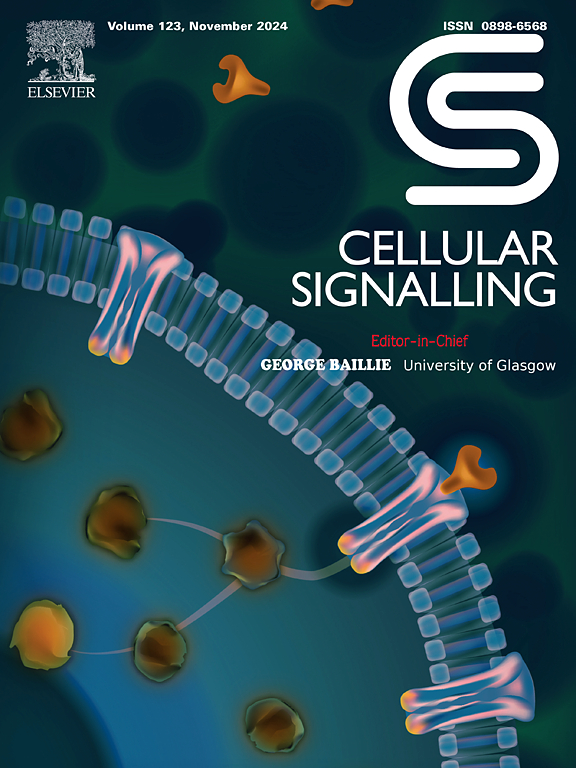缺乏ATF2可延缓小鼠颌骨骨髓干细胞由复制应激和帕米膦酸盐诱导的衰老。
IF 4.4
2区 生物学
Q2 CELL BIOLOGY
引用次数: 0
摘要
衰老过程与骨量的损失和衰老细胞的积累有关,这是在表观遗传控制下的。形态学和分子分析显示,衰老小鼠的骨量和牙槽嵴高度显著减少,同时衰老小鼠颌骨骨髓干细胞(mJBMSCs)水平升高。为了研究是否有特定的转录因子参与其中,我们对从2、4、8和20月龄小鼠中分离的mJBMSCs进行了转座酶可及染色质测序(ATAC-seq)测定。在20个月大的mJBMSCs中,观察到染色质可及性增加,同时细胞和牙槽骨中激活转录因子2 (ATF2)的表达升高。沉默mJBMSCs中的Atf2不能逆转生理衰老,但会延迟复制应激和帕米膦酸盐(PAM)诱导的衰老。ATAC-seq和RNA测序分析表明,PAM上调而ATF2缺乏下调的差异表达基因与细胞增殖、炎症反应、脂肪生成、细胞衰老等关键生物学过程负调控有关。双荧光素酶实验表明,ATF2通过结合Cdkn2a的启动子区域来增强Cdkn2a的转录。我们的研究结果表明,衰老的mJBMSCs中存在显著的染色质改变,将ATF2定位为对抗外部诱导衰老的潜在靶标。本文章由计算机程序翻译,如有差异,请以英文原文为准。

Deficiency of ATF2 retards senescence induced by replication stress and pamidronate in mouse jaw bone marrow stem cells
The aging process is associated with a loss of bone mass and an accumulation of senescent cells, which is under epigenetic control. Morphological and molecular analysis revealed a notable reduction in bone mass and alveolar crest height in aged mice, accompanied by increased levels of senescent mouse jaw bone marrow stem cells (mJBMSCs). To investigate whether specific transcription factors are involved, assay for transposase-accessible chromatin with sequencing (ATAC-seq) was performed on mJBMSCs isolated from 2-, 4-, 8-, and 20-month-old mice. In 20-month-old mJBMSCs, increased chromatin accessibility was observed alongside elevated expression of activating transcription factor 2 (ATF2) in both cells and alveolar bone. Silencing Atf2 in mJBMSCs failed to reverse physiological aging, but delayed replication stress and pamidronate (PAM) induced senescence. The analysis of ATAC-seq and RNA sequencing indicated that the differentially expressed genes upregulated by PAM but downregulated by ATF2 deficiency were related to some key biological processes, including negative regulation of cell proliferation, inflammatory response, adipogenesis, and cellular senescence. The dual-luciferase assay was conducted to demonstrate that ATF2 enhances Cdkn2a transcription by binding to its promoter region. Our findings suggest significant chromatin alterations in aged mJBMSCs, positioning ATF2 as a potential target for combating externally induced senescence.
求助全文
通过发布文献求助,成功后即可免费获取论文全文。
去求助
来源期刊

Cellular signalling
生物-细胞生物学
CiteScore
8.40
自引率
0.00%
发文量
250
审稿时长
27 days
期刊介绍:
Cellular Signalling publishes original research describing fundamental and clinical findings on the mechanisms, actions and structural components of cellular signalling systems in vitro and in vivo.
Cellular Signalling aims at full length research papers defining signalling systems ranging from microorganisms to cells, tissues and higher organisms.
 求助内容:
求助内容: 应助结果提醒方式:
应助结果提醒方式:


